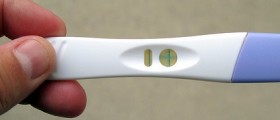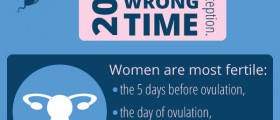Progesterone
Progesterone is a steroid hormone responsible for conceiving and maintaining pregnancy, as well as for achieving sexual desire in women. The ovaries, adrenal glands, and placenta during pregnancy produce this hormone. The hormone pregnenolone helps in progesterone production, while progesterone, on the other side, helps in the production of cortisol, estrogen, and testosterone. It is very important for the well-being of a woman to have hormonal balance.
The low level of progesterone may be caused by liver dysfunction or when estrogen predominates. Furthermore, chronic stress and insulin resistance may be the main causes of this condition. Low progesterone may occur in the case when the diet is poor in nutrition but rich in sugar, and sometimes certain medications may slow the production of progesterone.

Symptoms of Low Progesterone
The state of low progesterone is usually called estrogen dominance and in this condition, numerous symptoms occur. One of the symptoms of low progesterone in women is infertility. Progesterone is the most produced during the ovulation. When the pregnancy is not conceived, the level of progesterone falls. Sometimes, it occurs that the low levels of progesterone maintain and disable ovulation or the preparation of the uterus for pregnancy.
Another symptom of low progesterone is the occurrence of blood clots during menstruation and irregular menstrual periods. In some cases, menstruation does not appear for several months, and on the other side, many women may experience frequent and excessive menstrual flows.
Low progesterone may also cause endometrial polyps and fibroids. Polyps grow within the uterine lining, but as well as fibroids, they are not very serious conditions, because they are benign growths. In some cases, when the level of progesterone is low while the level of estrogen is high, the soreness of breasts may occur. Painful bloating and water retention are some of the symptoms of this condition. The gaining of the weight may happen as well.
Some women may experience breast enlargement during the progesterone deficiency. Depression, sadness, anxiety, and emotional instability may also be some of the symptoms of low levels of progesterone, though sleeplessness because of the hot flashes and night sweats are also very usual.
Other symptoms that are also very common for the lack of progesterone are thyroid dysfunction, gallbladder disease, and hypoglycemia, as well as vaginal dryness, panic attacks, and magnesium deficiency. When some of the symptoms listed above are noticed, the woman must go and visit a doctor, or she may test the level of progesterone at home by measuring the temperature of the body during ovulation.
The temperature of the female body rises along with the progesterone levels. If a basal thermometer does not show the increase in temperature during ovulation, it is a sign that progesterone is not normally produced.
- Premenstrual syndrome (PMS) comprises affective, behavioral, and physical symptoms appearing during the luteal phase of the menstrual cycle and ameliorating after the onset of menses. Symptoms of PMS include fatigue, depression, cramps, bloating, anxiety and breast tenderness. A recent meta-analysis shows that the prevalence of PMS is 47.8% (95% CI: 32.6–62.9), with a lower prevalence in France, i.e., 12% (95% CI: 11–13), and a higher prevalence in Iran, namely 98% (95% CI: 97–100). This burdersome condition is commonly observed in adolescent girls and young women with prevalence rates between 58.1 to 92.3% among university students.
- The normal menstrual cycle results from an integrated action of the hypothalamic-pituitary-ovary axis and the uterine endometrium. The hypothalamus releases gonadotropin-releasing hormone (GnRH) every 1–1.5 h during the follicular phase and every 2–4 h during the luteal phase. GnRH activates the pituitary gland thereby increasing levels of luteinizing hormone (LH) and follicle stimulating hormone (FSH). LH stimulates theca cells of the ovarian follicles to produce androstenedione, whereas FSH stimulates the synthesis of aromatase, which catalyzes the conversion of androstenedione into oestradiol.
- Objective of our study was to examine associations between levels of progesterone and oestradiol during the menstrual cycle and PMS considering different diagnostic criteria for PMS.
- Forty-one women aged 18–45 years with a regular menstrual cycle completed the Daily Record of Severity of Problems (DRSP) for all 28 consecutive days of the menstrual cycle. Blood was sampled at days 7, 14, 21, and 28 to assay oestradiol and progesterone.
- We developed a new diagnosis of peri-menstrual syndrome, which is characterized by increased DRSP severity in pre and post-menstrual periods and increased scores on the major DRSP dimensions, i.e., depression, physio-somatic symptoms, breast tenderness and appetite, and anxiety. This new diagnosis performed better than classical diagnoses of PMS, including that of the American College of Obstetricians and Gynecologists (ACOG).
- Lowered steady state levels of progesterone, when averaged over the menstrual cycle, together with declining progesterone levels during the luteal phase predict severity of peri-menstrual symptoms. Steady state levels of oestradiol and declining oestradiol levels during the cycle are also related to DRSP severity although most of these effects appeared to be mediated by progesterone.



-In-Adults_f_280x120.jpg)













Your thoughts on this
Loading...